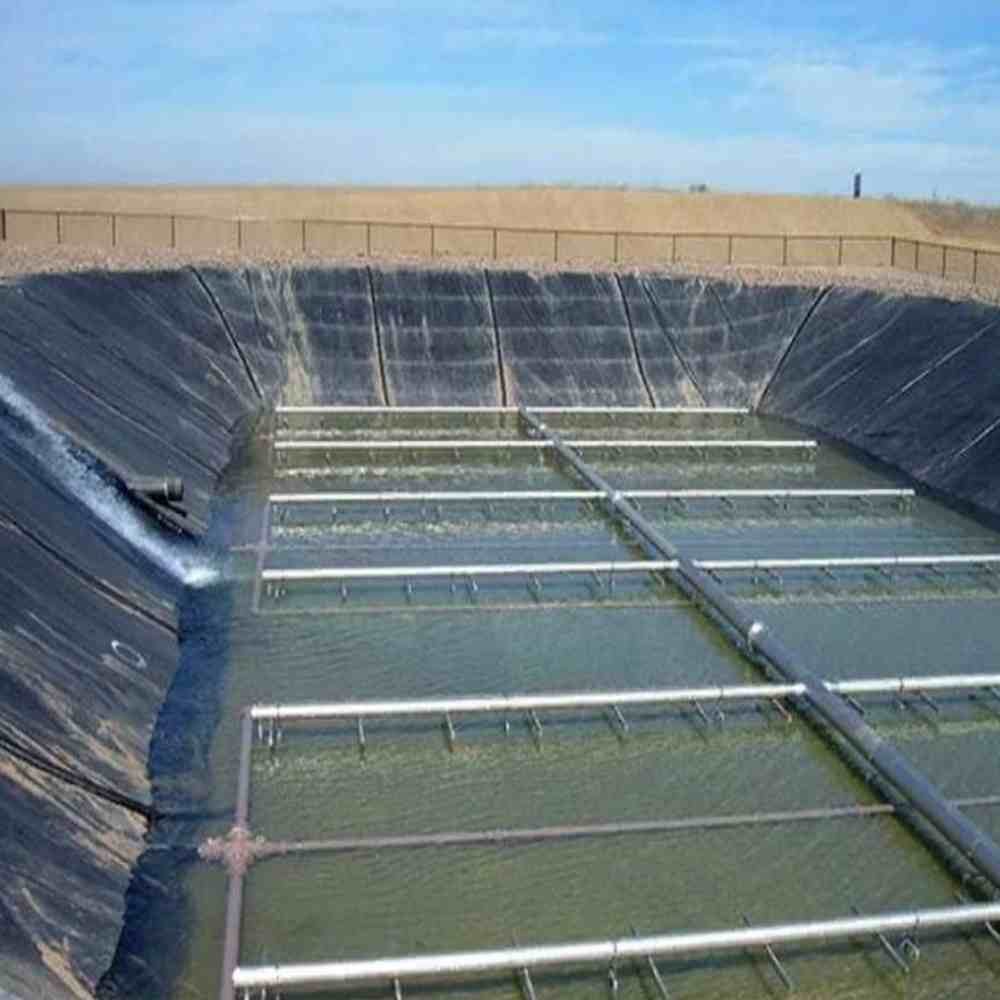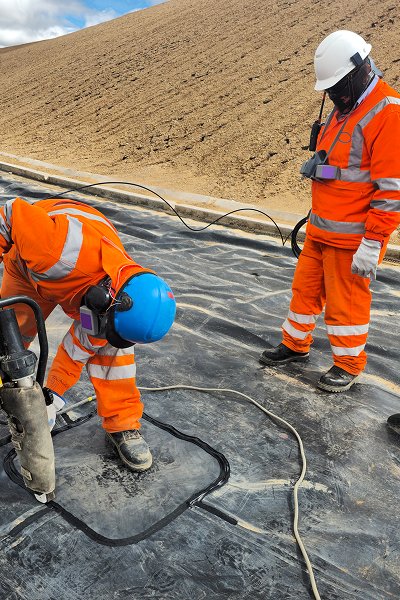Physical Properties of HDPE Pond Liner
High strength and wear resistance
HDPE materials have a tight molecular structure. The pond liner needs to withstand changes in the pond water level, the pressure of water flow, and the effects of external environmental factors. HDPE materials can provide sufficient strength to prevent rupture or deformation. HDPE liners also have strong wear resistance, adapt to harsh construction and use conditions, and reduce damage caused by improper use or long-term use.
Anti-permeability
HDPE pond liners have extremely low water permeability. The water in the pond needs to remain stable and should not leak into the surrounding soil or external water sources into the pond. HDPE liners can effectively prevent water penetration, ensure that the water level and water quality in the pond are not affected by the outside world, and avoid soil erosion problems.
Chemical corrosion resistance
Pond water may contain various chemicals, such as acidic and alkaline substances, minerals or aquaculture sewage. HDPE materials have good chemical stability and can withstand corrosion from various common chemicals, which makes HDPE liners particularly suitable for water bodies with severe chemical pollution.
Pond liner durability and long life
UV radiation resistance
HDPE material has strong UV resistance and will not degrade significantly when exposed to sunlight for a long time. Pond liners are often exposed to the external environment, and UV radiation may cause the material to age. However, the UV resistance of HDPE material can effectively extend the service life of the liner and avoid performance degradation caused by UV radiation.
Freeze-thaw resistance
Pond liners need to withstand seasonal temperature changes. HDPE material has good freeze-thaw resistance and can adapt to the expansion and contraction caused by temperature changes, and will not lose function due to freezing or embrittlement. Even in extremely cold environments, HDPE liners can maintain their structural stability and ensure the long-term effective operation of the pond.
Anti-microbial erosion
Microorganisms and algae in the pond water sometimes erode the pond liner. HDPE material has good anti-microbial properties and is not easily damaged or eroded by microorganisms in the water, which can effectively maintain the integrity and service life of the liner.
Pond liners have multiple applications
Aquaculture
HDPE pond liners can effectively prevent water pollution and prevent the leakage of harmful substances in aquaculture water. Whether it is fish farming, shrimp farming, or other aquatic animal farming, HDPE liners can provide ideal environmental support to help the aquaculture industry reduce risks and improve production efficiency.

Sewage treatment
HDPE pond liners are widely used in sewage treatment projects, the construction of artificial wetlands and sewage pools. The liner can prevent pollutants from penetrating into groundwater or the surrounding environment, avoiding the spread of pollution. With the advancement of sewage treatment technology, the use of HDPE liners has become one of the standard configurations for sewage treatment.

Agricultural irrigation
HDPE pond liners are also widely used in the construction of agricultural irrigation systems, reservoirs and irrigation canals. By preventing water leakage, HDPE liners can effectively maintain water sources and reduce the waste of water resources, especially in areas with water shortages.

HDPE pond liners have become an indispensable material in pond and water projects due to their physical properties, environmental friendliness, economic benefits and multifunctional applications. HDPE pond liners will continue to play an important role in all walks of life, helping to build a greener and more sustainable ecological environment. The application scope of HDPE pond liners may be wider, helping more water engineering projects to achieve environmental protection and sustainable development goals.



